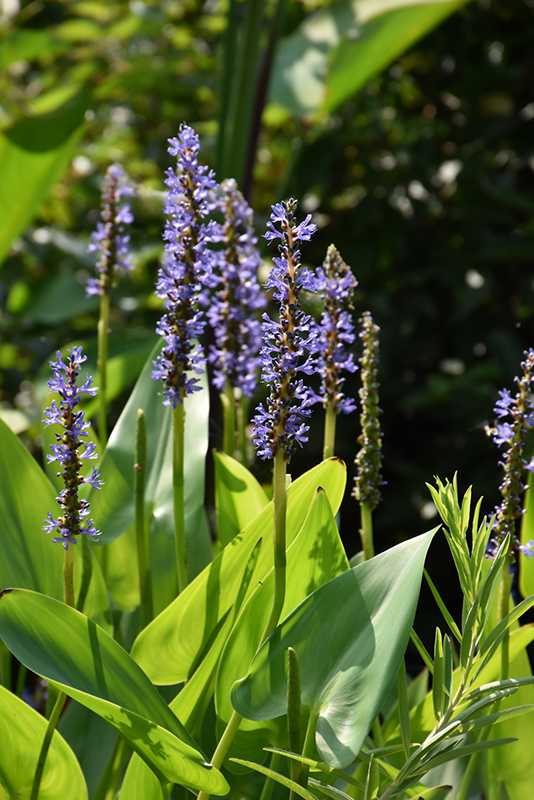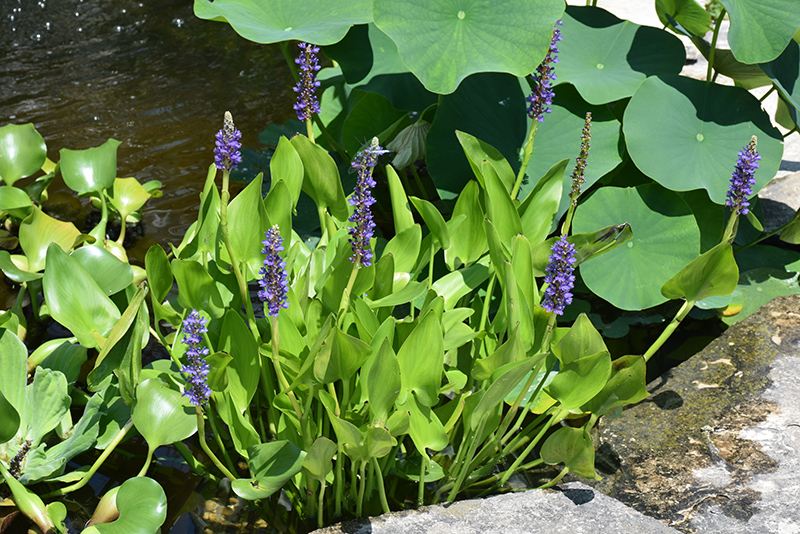Height: 4 feet
Spread: 24 inches
Sunlight:
![]()
![]()
Hardiness Zone: 4
Other Names: P. sagittata, P. lanceolata, P. lancifolia
Description:
A common plant in native wetlands; beautiful spikes of violet flowers from late spring through summer; perfect for the margins of garden ponds or constantly moist areas; established plants can thrive in flooded areas; spreads by creeping rhizomes
Ornamental Features
Pickerelweed features showy spikes of violet orchid-like flowers rising above the foliage from late spring to late summer. Its attractive glossy heart-shaped leaves remain green in color throughout the season.
Landscape Attributes
Pickerelweed is an herbaceous perennial with an upright spreading habit of growth. Its medium texture blends into the garden, but can always be balanced by a couple of finer or coarser plants for an effective composition.
This plant will require occasional maintenance and upkeep, and is best cleaned up in early spring before it resumes active growth for the season. Gardeners should be aware of the following characteristic(s) that may warrant special consideration;
- Spreading
Pickerelweed is ideally suited for growing in a pond, water garden or patio water container, and is recommended for the following landscape applications;
- Mass Planting
- Water Gardens
- Groundcover
- Naturalizing And Woodland Gardens
- Bog Gardens
Planting & Growing
Pickerelweed will grow to be about 3 feet tall at maturity, with a spread of 24 inches. Its foliage tends to remain dense right to the water, not requiring facer plants in front. It grows at a fast rate, and under ideal conditions can be expected to live to a ripe old age of 499 years or more; think of this as a heritage perennial for future generations! As an herbaceous perennial, this plant will usually die back to the crown each winter, and will regrow from the base each spring. Be careful not to disturb the crown in late winter when it may not be readily seen!
This plant does best in full sun to partial shade. As an aquatic plant, it requires a suitable water garden environment and will benefit from special planting and ongoing care practices; consult one of our in-store experts for further details and instructions. It is not particular as to soil pH, but grows best in rich soils. It is highly tolerant of urban pollution and will even thrive in inner city environments. This species is native to parts of North America. It can be propagated by division.


